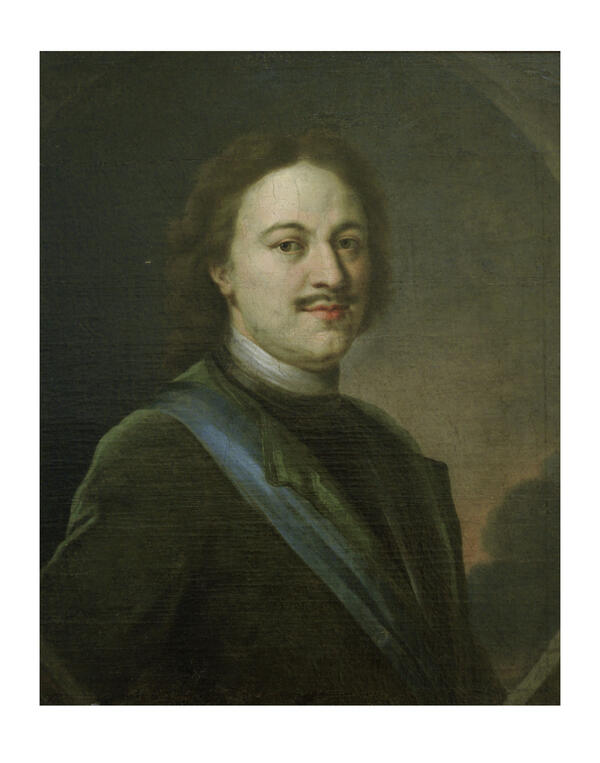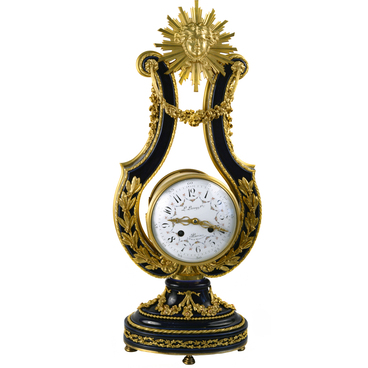The portrait of Peter the Great by an unknown artist opens the exposition of the nobles' hall. Before entering the museum, it was in the Orlov estate of Princes Kurakin. Experts suggest that the canvas is a copy of a lifetime portrait of the Emperor, painted by the famous Dutch painter Carel de Moor.
In the 17th century, Russia’s painters began to write the first portraits. They showed the monarchs and their entourage. They were called “parsuna”; it comes from the Latin word “persona” that means “personality, ” “person”. The main purpose of this kind of portrait was not to capture a specific person but to glorify the person as a representative of a noble family. Artists of this genre did not strive to achieve a maximum resemblance to the portrayed. They portrayed their heroes according to accepted templates characteristic of their rank and status.
It was under Peter the Great that secular painting appeared in Russia, and soon the parsuns were replaced by paintings in the European style. Ceremonial portraits with gilt frames were placed in the palace halls. The portrait of the monarch could be enframed with a canopy.
Both Russian and European artists created lifetime portraits of the first emperor and founder of the Russian Empire. The name of the painter who made the version of the portrait of Peter the Great shown at the exhibition of the Oryol museum is unknown.
The Hermitage catalogs of the mid-19th century attribute authorship of exactly the same picture to the Russian portrait painter Andrey Matveev, one of the founders of Russian secular painting. But during the reign of Peter, the Great Matveev studied in Belgium and returned to Russia only in 1727, so he could not paint Peter from life. Experts believe the artist made a copy of an original portrait made by the Dutch portrait painter Carel de Moor commissioned by Count Sergei Stroganov.
De Moor created this canvas in March 1717 in The Hague, where Peter came from Paris for medical treatment. From the correspondence between the Emperor and his wife Catherine, it is known that the Tsar liked the portrait of Moor very much. Prince Boris Kurakin bought it and brought it from France to St. Petersburg.
In the 17th century, Russia’s painters began to write the first portraits. They showed the monarchs and their entourage. They were called “parsuna”; it comes from the Latin word “persona” that means “personality, ” “person”. The main purpose of this kind of portrait was not to capture a specific person but to glorify the person as a representative of a noble family. Artists of this genre did not strive to achieve a maximum resemblance to the portrayed. They portrayed their heroes according to accepted templates characteristic of their rank and status.
It was under Peter the Great that secular painting appeared in Russia, and soon the parsuns were replaced by paintings in the European style. Ceremonial portraits with gilt frames were placed in the palace halls. The portrait of the monarch could be enframed with a canopy.
Both Russian and European artists created lifetime portraits of the first emperor and founder of the Russian Empire. The name of the painter who made the version of the portrait of Peter the Great shown at the exhibition of the Oryol museum is unknown.
The Hermitage catalogs of the mid-19th century attribute authorship of exactly the same picture to the Russian portrait painter Andrey Matveev, one of the founders of Russian secular painting. But during the reign of Peter, the Great Matveev studied in Belgium and returned to Russia only in 1727, so he could not paint Peter from life. Experts believe the artist made a copy of an original portrait made by the Dutch portrait painter Carel de Moor commissioned by Count Sergei Stroganov.
De Moor created this canvas in March 1717 in The Hague, where Peter came from Paris for medical treatment. From the correspondence between the Emperor and his wife Catherine, it is known that the Tsar liked the portrait of Moor very much. Prince Boris Kurakin bought it and brought it from France to St. Petersburg.



